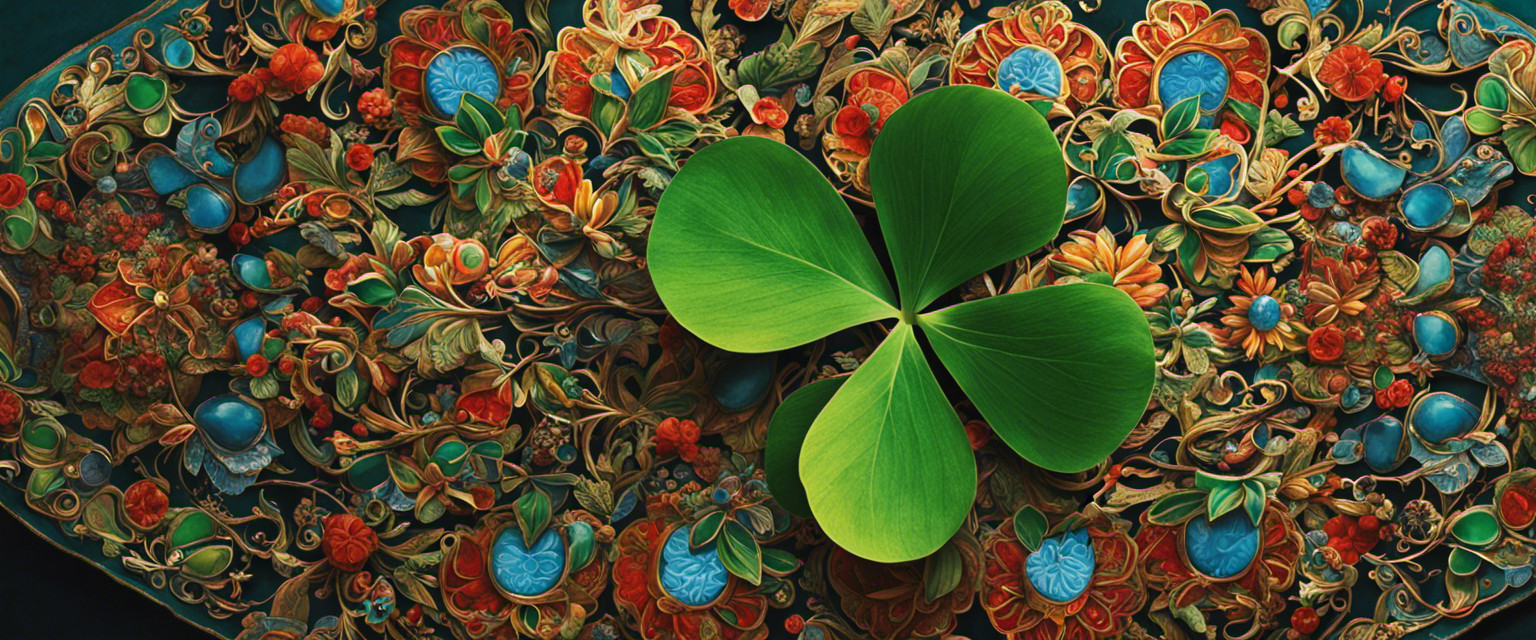Clover, a small flowering plant in the legume family, may appear inconspicuous to many. However, its historical and cultural significance is worth exploring.
This article aims to provide an objective analysis of the useless knowledge about clover’s cultural importance. By delving into its past relevance and providing an in-depth explanation of its cultural significance, this article seeks to inform readers about this often overlooked aspect of nature.
Additionally, practical tips for growing clover will be offered. Ultimately, this exploration strives to empower individuals seeking freedom through expanded knowledge and appreciation of the natural world.
Clover’s Historical Significance
Symbolism in ancient cultures often revolved around natural elements. One such plant that held religious associations in various ancient societies is the clover. The clover had deep symbolic meanings and was seen as a sacred plant in many cultures. It represented luck, fertility, and spiritual beliefs.
Symbolism in Ancient Cultures
The significance of certain plants in ancient cultures can be observed through their representation in various rituals and artifacts. In many ancient civilizations, plants held deep symbolic meanings and were often incorporated into ritual practices, superstitious beliefs, and folklore.
For example, the lotus flower was highly revered in ancient Egyptian culture for its association with rebirth and spiritual enlightenment. Similarly, the olive tree symbolized peace and wisdom in ancient Greek mythology.
These symbolic associations demonstrate the importance of plants in shaping cultural beliefs and practices throughout history.
Clover’s Religious Associations
Clover has been associated with religious beliefs in various cultures throughout history due to its presence in rituals and artifacts. In folklore, clover is often considered a symbol of luck. Its connection to luck can be traced back to ancient times, where it was believed that finding a four-leaf clover would bring good fortune.
Additionally, the three leaves of the common clover have been interpreted as representing the Holy Trinity in Christian symbolism. Thus, clover holds a significant role in both folklore and religious contexts.
Main Explanation of Cultural Significance
Cultural significance of the clover is primarily rooted in its association with luck and fortune. In folklore, the four-leaf clover has been considered a symbol of good fortune and prosperity. This belief has led to various rituals and customs involving clovers, such as carrying them for protection or placing them in homes to attract positive energy.
Additionally, clovers have been used in traditional medicine for their healing properties, including treating skin conditions and digestive ailments. Its longstanding presence in cultural practices highlights the enduring impact of the clover on human beliefs and well-being.
Tips for Growing Clover
Tips for successfully growing clover include selecting the appropriate soil conditions, providing adequate sunlight, and maintaining regular watering practices.
- Choose a well-drained soil with a pH level between 6.0 and 7.0.
- Clover thrives in full sun but can tolerate some shade.
- Water consistently to keep the soil moist but not waterlogged.
- Consider using specific varieties such as red clover, white clover, or crimson clover based on your garden’s needs.
Incorporating these tips will ensure healthy growth and maximize the benefits of clover in gardens.
This section has provided helpful tips for successfully growing clover in gardens by focusing on key factors such as soil conditions, sunlight requirements, watering practices, and suitable varieties. By following these guidelines, gardeners can optimize their chances of cultivating thriving clover plants that offer various benefits to the overall garden ecosystem.
Now let’s delve into some final thoughts on the cultural significance of this versatile plant.
Final Thoughts
In conclusion, reflecting on the information provided reveals the various factors that contribute to the successful growth of clover plants in gardens.
However, it is important to note that clover also holds cultural significance beyond its agricultural value. In folklore and superstitions, clover has been associated with luck and protection.
Moreover, modern day agriculture and farming practices have recognized the benefits of clover as a cover crop, improving soil health and fertility through nitrogen fixation.
Overall, understanding these aspects enhances our appreciation for the multifaceted nature of clover.
Frequently Asked Questions
What Is the Scientific Name of the Clover Plant?
The scientific name of the clover plant is Trifolium. It belongs to the family Fabaceae and the genus Trifolium. Clovers have been traditionally used for their medicinal properties due to their antioxidant and anti-inflammatory effects.
How Many Leaflets Does a Typical Clover Leaf Have?
The typical clover leaf consists of three leaflets, forming a tripartite pattern. However, the cultural significance of four-leaf clovers stems from their rarity and association with luck, transcending the normative leaflet count.
Are All Clover Plants Green in Color?
Clover plant varieties exhibit a range of leaf colors, including green, purple, and red. The color variation is attributed to the presence of different pigments in the leaves, such as chlorophyll, anthocyanins, and carotenoids.
Can Clover Be Used as a Natural Remedy for Any Ailments?
Clover has been used in traditional medicine for various ailments due to its believed medicinal properties. However, scientific evidence regarding the effectiveness of clover as a natural remedy is limited and further research is needed to validate these claims.
Are There Any Superstitions or Folklore Associated With Finding a Four-Leaf Clover?
Superstitions surrounding four-leaf clovers are prevalent in various cultures. The history of clover in folklore and mythology reveals its association with luck and protection. These beliefs have transcended time, shaping cultural practices and inspiring the search for these rare charms.





